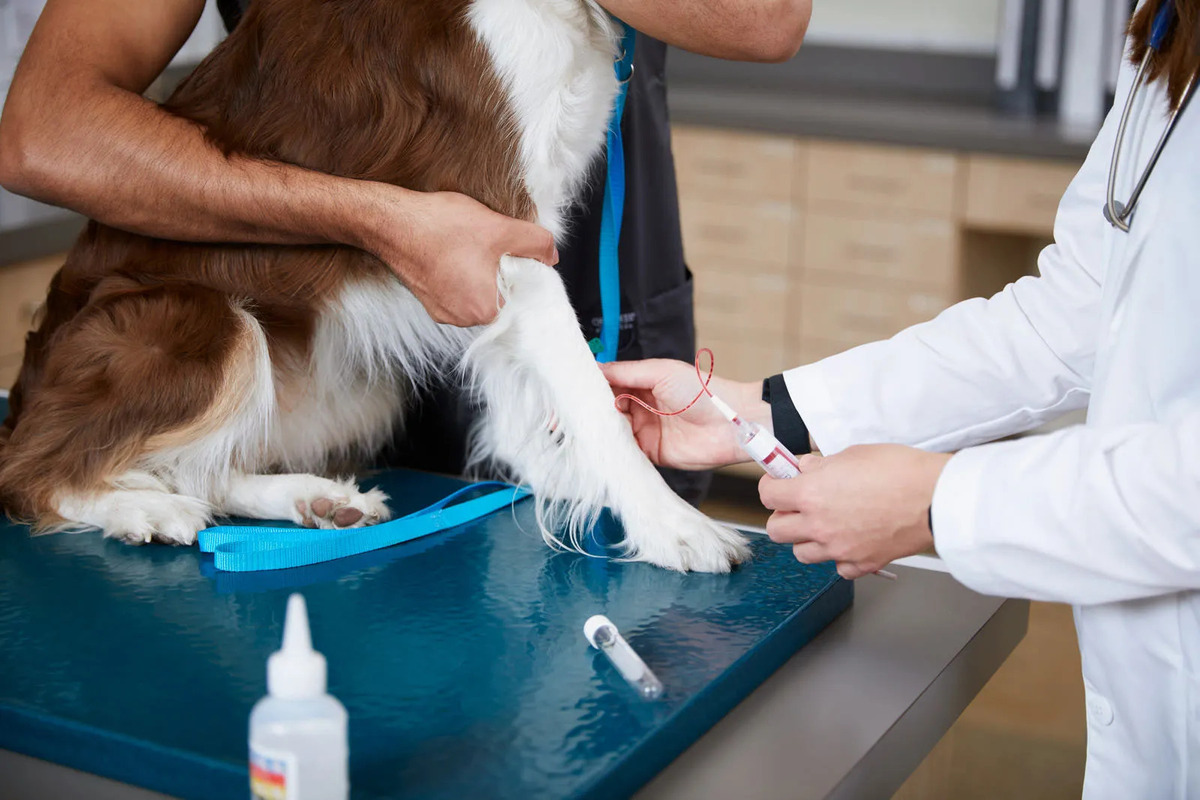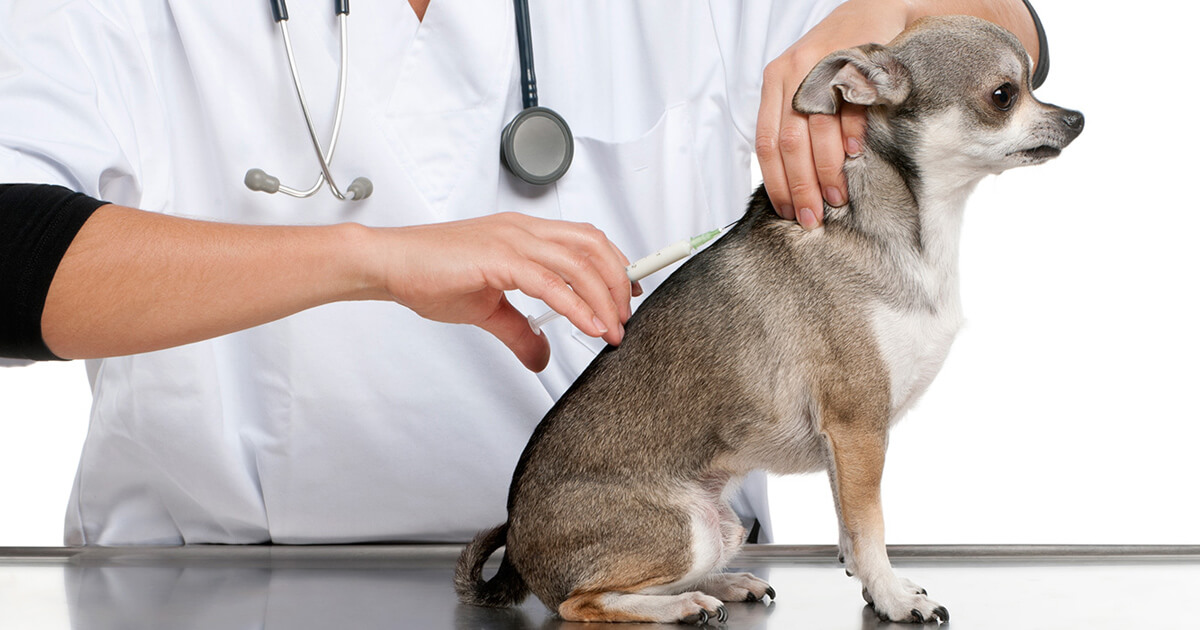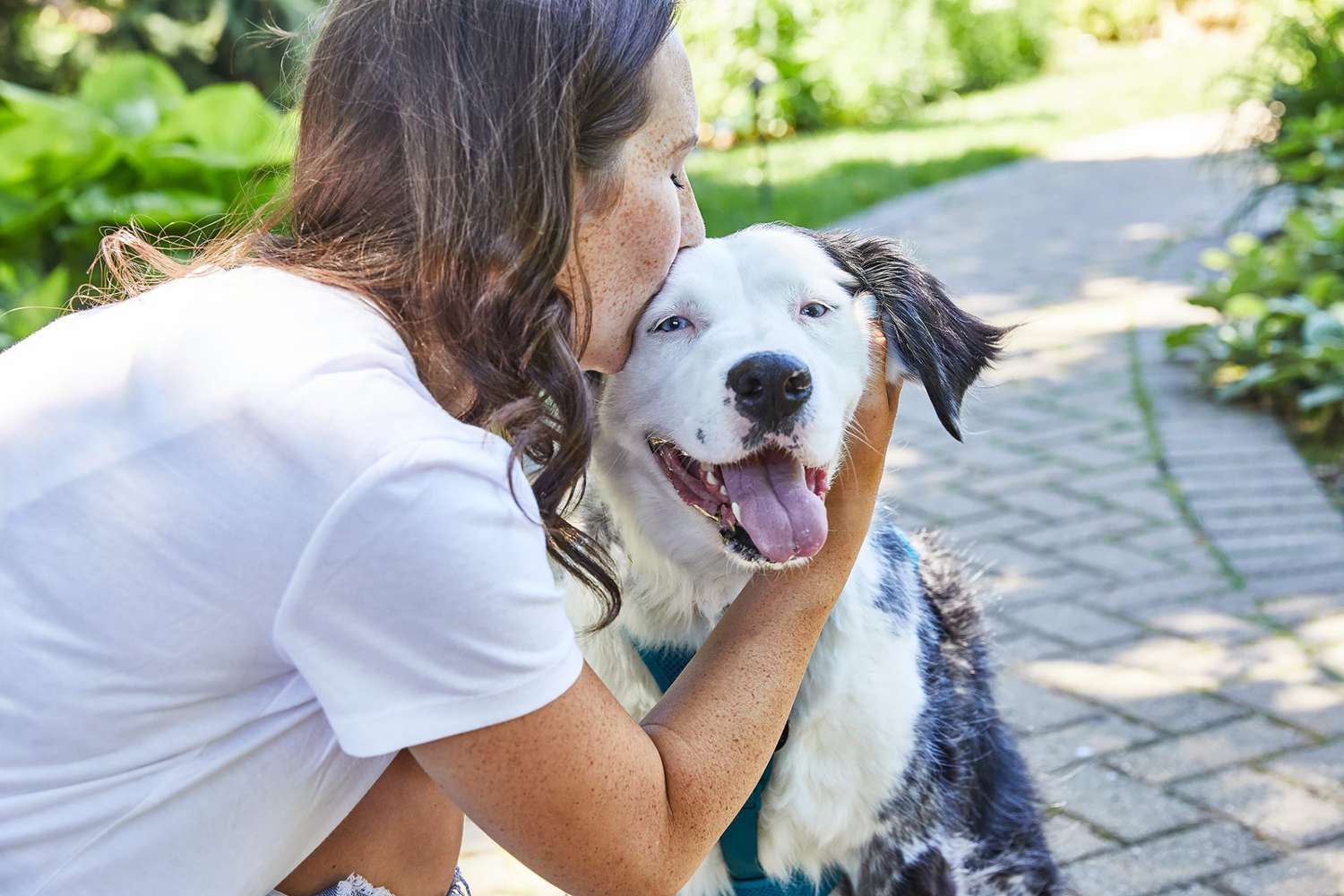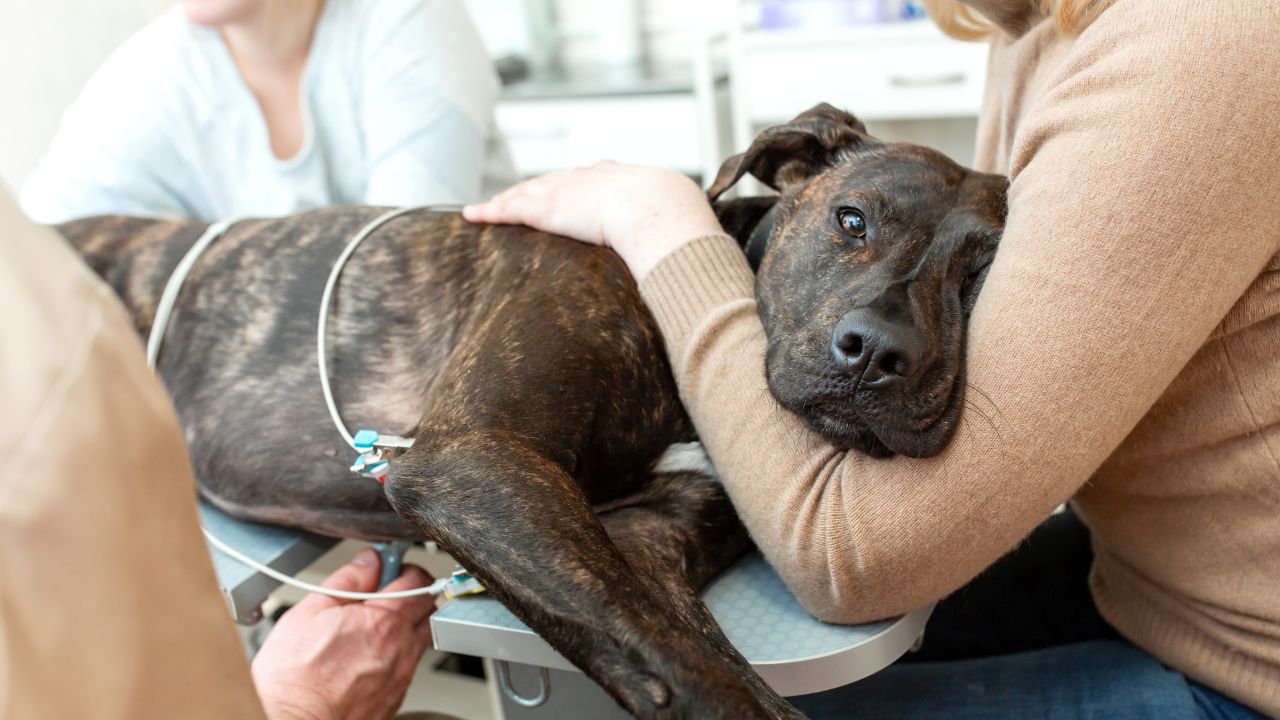Home>Health & Wellness>Common Health Issues>How Do Dogs Get Bladder Cancer


Common Health Issues
How Do Dogs Get Bladder Cancer
Published: February 4, 2024
Learn about common health issues in dogs, including bladder cancer. Discover how dogs can develop this condition and the potential treatment options available.
(Many of the links in this article redirect to a specific reviewed product. Your purchase of these products through affiliate links helps to generate commission for Pawsomeoldies.com, at no extra cost. Learn more)
Table of Contents
Introduction
Bladder cancer is a concerning health issue that can affect our beloved canine companions. Just like humans, dogs can also develop this condition, which can be distressing for both the pet and their human family. Understanding the causes, symptoms, diagnosis, treatment options, and prognosis of bladder cancer in dogs is crucial for providing the best possible care and support for our furry friends.
Bladder cancer, also known as transitional cell carcinoma (TCC), can arise in the urinary bladder of dogs, leading to various health complications. This condition can be challenging to detect in its early stages, making it essential for pet owners to be aware of the potential signs and risk factors associated with this disease.
As responsible pet owners, it's important to be proactive in monitoring our dogs' health and seeking veterinary care at the first sign of any concerning symptoms. By gaining a deeper understanding of bladder cancer in dogs, we can take the necessary steps to promote early detection, explore treatment options, and provide our furry companions with the best possible quality of life.
In the following sections, we will delve into the causes, symptoms, diagnosis, treatment options, prognosis, and prevention strategies related to bladder cancer in dogs. By shedding light on these crucial aspects, we aim to equip pet owners with the knowledge and insights needed to navigate this challenging health issue and make informed decisions for the well-being of their canine companions.
Read more: How Often Do Dogs Get Testicular Cancer
Causes of Bladder Cancer in Dogs
Bladder cancer in dogs can stem from various factors, with certain breeds being more predisposed to this condition. One of the primary causes of bladder cancer in dogs is exposure to environmental toxins, particularly those found in cigarette smoke. Dogs living in households with smokers or in areas with high levels of environmental pollutants may face an increased risk of developing bladder cancer.
Furthermore, certain breeds, such as Scottish Terriers, Shetland Sheepdogs, Beagles, and West Highland White Terriers, have been identified as having a genetic predisposition to bladder cancer. This genetic susceptibility can elevate the likelihood of these dogs developing transitional cell carcinoma (TCC), a common form of bladder cancer in canines.
Additionally, exposure to certain chemicals and herbicides has been linked to an elevated risk of bladder cancer in dogs. Prolonged exposure to these substances, whether through direct contact or environmental contamination, can contribute to the development of this disease.
Moreover, chronic urinary tract infections and inflammation can also play a role in the onset of bladder cancer in dogs. Persistent irritation and inflammation of the bladder can potentially lead to the development of cancerous cells, highlighting the importance of promptly addressing urinary tract issues in dogs.
It's important to note that while these factors are associated with an increased risk of bladder cancer in dogs, the exact cause of this condition can vary from one case to another. Understanding these potential causes can help pet owners and veterinarians remain vigilant in monitoring at-risk dogs and taking proactive measures to mitigate the risk factors associated with bladder cancer.
By recognizing the various factors that can contribute to the development of bladder cancer in dogs, pet owners can work towards creating a safe and healthy environment for their furry companions, while also being mindful of the specific needs and vulnerabilities of certain breeds. This awareness can empower pet owners to take preventive actions and seek timely veterinary care, ultimately contributing to the overall well-being of their canine friends.
Symptoms of Bladder Cancer in Dogs
Identifying the symptoms of bladder cancer in dogs is crucial for early detection and prompt intervention. While the signs of this condition can vary depending on the specific case and the stage of the cancer, there are several common symptoms that pet owners should be mindful of.
-
Urinary Changes: Dogs with bladder cancer may exhibit noticeable changes in their urinary habits. This can include increased frequency of urination, difficulty or straining to urinate, and the presence of blood in the urine, which may appear as a pink or red tinge. Pet owners should pay close attention to any alterations in their dog's urination patterns, as these can serve as important indicators of potential health issues, including bladder cancer.
-
Accidents in the House: Uncharacteristic accidents inside the house, particularly in well-trained dogs, can be a red flag for bladder cancer. If a dog suddenly starts urinating indoors or experiences incontinence, it could be a sign of an underlying health concern, including bladder cancer.
-
Pain and Discomfort: Dogs suffering from bladder cancer may display signs of discomfort or pain, especially during urination. This can manifest as whimpering, restlessness, or visible signs of distress when attempting to urinate. Additionally, dogs with bladder cancer may exhibit discomfort in the abdominal area, often indicated by reluctance to be touched or a hunched posture.
-
Lethargy and Weight Loss: As with many health conditions, bladder cancer can lead to a general decline in a dog's overall well-being. Lethargy, decreased appetite, and unexplained weight loss can be indicative of an underlying health issue, prompting pet owners to seek veterinary evaluation.
-
Visible Mass or Swelling: In some cases, bladder cancer may cause the development of a palpable mass or swelling in the abdominal area. Pet owners should regularly check for any unusual lumps or swelling in their dog's abdomen and promptly consult a veterinarian if such abnormalities are detected.
It's important to note that while these symptoms can point towards bladder cancer, they can also be associated with other urinary tract issues. Therefore, if a pet owner observes any of these signs in their dog, it's essential to seek professional veterinary guidance for a comprehensive evaluation and accurate diagnosis.
By being attentive to these potential symptoms and seeking timely veterinary care, pet owners can play a proactive role in safeguarding their dog's health and well-being. Early detection of bladder cancer can significantly impact the treatment outcomes, potentially improving the prognosis and quality of life for affected dogs.
Diagnosis of Bladder Cancer in Dogs
Diagnosing bladder cancer in dogs requires a comprehensive approach that encompasses various diagnostic techniques and assessments. When a dog presents with symptoms suggestive of bladder cancer, the veterinarian will conduct a thorough evaluation to determine the underlying cause of the observed signs. The diagnostic process typically involves the following key components:
-
Physical Examination: The initial step in diagnosing bladder cancer involves a detailed physical examination of the dog. The veterinarian will palpate the abdomen to check for any abnormalities, such as masses or swelling, and assess the overall condition of the dog.
-
Urinalysis: A urinalysis is a fundamental diagnostic tool used to evaluate the dog's urine for abnormalities. This analysis can reveal the presence of blood, abnormal cells, or other indicators of urinary tract issues, providing valuable insights into the dog's urinary health.
-
Imaging Studies: Imaging techniques, such as ultrasound and radiography, play a crucial role in diagnosing bladder cancer in dogs. These non-invasive methods allow for the visualization of the bladder and surrounding structures, aiding in the detection of abnormalities, including tumors or irregularities in the bladder wall.
-
Cystoscopy: In some cases, a cystoscopy may be performed to directly visualize the inside of the bladder. This minimally invasive procedure involves the insertion of a thin, flexible camera (cystoscope) into the bladder, enabling the veterinarian to examine the bladder lining and identify any suspicious lesions or abnormalities.
-
Biopsy: A definitive diagnosis of bladder cancer often requires a biopsy of the affected tissue. During a cystoscopy or surgical procedure, the veterinarian may obtain a tissue sample from the bladder for histopathological examination. This biopsy allows for the identification of cancerous cells and the determination of the specific type and grade of the tumor.
-
Additional Tests: Depending on the clinical presentation and findings, additional tests, such as blood work and advanced imaging modalities like computed tomography (CT) scans, may be recommended to further assess the extent of the disease and its potential impact on surrounding tissues and organs.
Accurate diagnosis is pivotal in formulating an effective treatment plan and determining the prognosis for dogs with bladder cancer. By leveraging a combination of diagnostic tools and techniques, veterinarians can establish a definitive diagnosis, assess the extent of the disease, and tailor a comprehensive approach to managing bladder cancer in affected dogs. Early and precise diagnosis is instrumental in facilitating timely intervention and optimizing the outcomes for canine patients facing this challenging health condition.
Treatment Options for Bladder Cancer in Dogs
Upon the diagnosis of bladder cancer in dogs, the treatment approach is tailored to address the specific characteristics of the tumor, the overall health of the dog, and the extent of the disease. While bladder cancer in dogs can present significant challenges, there are several treatment options available to manage this condition and improve the quality of life for affected canine patients.
-
Surgical Intervention: In cases where the bladder cancer is localized and operable, surgical removal of the tumor may be considered. This approach aims to excise the cancerous tissue from the bladder, potentially alleviating symptoms and preventing the spread of the disease to surrounding areas. However, the feasibility of surgical intervention depends on factors such as the size and location of the tumor, as well as the overall health status of the dog.
-
Chemotherapy: Chemotherapy is a commonly employed treatment modality for bladder cancer in dogs. This systemic approach involves the administration of anti-cancer medications to target and inhibit the growth of cancer cells. Chemotherapy can be utilized as a standalone treatment or in conjunction with other therapeutic strategies, aiming to shrink tumors, alleviate symptoms, and impede the progression of the disease.
-
Radiation Therapy: Radiation therapy may be recommended to manage bladder cancer in dogs, particularly in cases where surgical intervention is not feasible or as an adjunct to other treatment modalities. This targeted approach utilizes high-energy radiation to destroy cancer cells and reduce the size of tumors, thereby mitigating urinary symptoms and enhancing the dog's quality of life.
-
Palliative Care: In instances where the bladder cancer is advanced and not amenable to curative treatments, palliative care plays a crucial role in supporting the dog's well-being and managing symptoms. Palliative measures, including pain management, dietary support, and supportive therapies, are implemented to optimize the dog's comfort and overall quality of life.
-
Clinical Trials and Novel Therapies: Participation in clinical trials and the exploration of novel treatment approaches may be considered in certain cases of bladder cancer in dogs. These initiatives aim to evaluate innovative therapies, experimental drugs, and advanced treatment modalities, contributing to the advancement of veterinary oncology and the potential improvement of treatment outcomes for affected dogs.
The selection of the most appropriate treatment approach for bladder cancer in dogs hinges on a comprehensive assessment of the individual dog's condition, including the type and stage of the cancer, overall health status, and the preferences of the pet owner. Veterinary oncologists work closely with pet owners to formulate a tailored treatment plan that aligns with the specific needs and circumstances of the canine patient, striving to optimize the outcomes and enhance the well-being of dogs facing this challenging health condition.
Read more: How Dogs Get Brain Cancer
Prognosis and Outlook for Dogs with Bladder Cancer
The prognosis for dogs diagnosed with bladder cancer is influenced by various factors, including the stage of the disease, the effectiveness of treatment, and the overall health of the canine patient. Bladder cancer in dogs can present significant challenges, and the prognosis can vary widely depending on the specific circumstances of each case.
In cases where bladder cancer is detected in its early stages and is localized within the bladder, the prognosis may be more favorable. With prompt intervention, which may include surgical removal of the tumor, chemotherapy, or radiation therapy, the progression of the disease can be mitigated, and the dog's quality of life may be significantly improved. However, the feasibility of curative treatments and the response to therapy play pivotal roles in determining the long-term outlook for affected dogs.
For dogs with advanced or metastatic bladder cancer, the prognosis may be more guarded. In these instances, the primary focus shifts towards palliative care aimed at managing symptoms, optimizing comfort, and supporting the overall well-being of the canine patient. While the prognosis for advanced bladder cancer may be more challenging, palliative measures can play a crucial role in enhancing the dog's quality of life and providing compassionate support throughout the course of the disease.
It's important to recognize that each canine patient is unique, and the prognosis for bladder cancer should be approached on an individual basis. Factors such as the specific type of bladder cancer, the presence of concurrent health issues, and the dog's response to treatment all contribute to the overall outlook for affected dogs. Additionally, the dedication and support provided by pet owners, along with the expertise of veterinary oncologists, can significantly impact the prognosis and the overall experience of dogs facing bladder cancer.
While bladder cancer in dogs presents challenges, advancements in veterinary oncology, ongoing research, and the availability of diverse treatment modalities offer hope for improved outcomes and enhanced quality of life for affected canine patients. By leveraging a comprehensive approach that encompasses early detection, tailored treatment strategies, and supportive care, veterinarians and pet owners can work together to optimize the prognosis and outlook for dogs navigating the complexities of bladder cancer.
Prevention of Bladder Cancer in Dogs
Preventing bladder cancer in dogs involves proactive measures aimed at minimizing potential risk factors and promoting overall urinary health. While not all instances of bladder cancer can be prevented, implementing certain strategies can contribute to reducing the likelihood of this disease and supporting the well-being of canine companions.
-
Environmental Awareness: Limiting exposure to environmental toxins and carcinogens is crucial in mitigating the risk of bladder cancer in dogs. Pet owners should strive to create a smoke-free environment and minimize their dogs' exposure to secondhand smoke, as cigarette smoke has been linked to an increased risk of bladder cancer. Additionally, being mindful of potential environmental pollutants and chemical hazards in the dog's living space can help reduce the risk of carcinogen exposure.
-
Genetic Predisposition: For dog breeds known to have a genetic predisposition to bladder cancer, such as Scottish Terriers and Shetland Sheepdogs, proactive monitoring and regular veterinary check-ups are essential. Pet owners of these at-risk breeds should maintain open communication with their veterinarians and remain vigilant for any potential urinary symptoms or abnormalities.
-
Urinary Health Maintenance: Promoting urinary tract health through adequate hydration and regular access to clean water is fundamental in supporting bladder health in dogs. Encouraging sufficient water intake can help maintain proper urinary function and minimize the risk of urinary tract issues that may contribute to the development of bladder cancer.
-
Routine Veterinary Care: Regular veterinary examinations and wellness visits play a pivotal role in early detection and intervention. Pet owners should prioritize routine check-ups and preventive care, allowing veterinarians to monitor the dog's overall health and promptly address any urinary concerns or potential risk factors for bladder cancer.
-
Balanced Nutrition: Providing a well-balanced diet that meets the specific nutritional needs of the dog can contribute to overall health and immune function. A nutritious diet tailored to the dog's age, breed, and health status supports optimal well-being, potentially reducing the risk of certain health conditions, including bladder cancer.
-
Toxin Avoidance: Being cautious with the use of herbicides, pesticides, and other potentially harmful chemicals in the dog's environment is essential. Minimizing direct contact with these substances and ensuring proper storage and disposal can help mitigate the risk of toxin exposure that may contribute to bladder cancer development.
By integrating these preventive measures into the care and management of dogs, pet owners can take proactive steps to promote urinary health and reduce potential risk factors associated with bladder cancer. While not all cases of bladder cancer can be prevented, these strategies contribute to the overall well-being of canine companions and support a proactive approach to urinary health management.
Conclusion
In conclusion, bladder cancer in dogs is a complex and challenging health issue that demands vigilance, proactive care, and a deep understanding of its causes, symptoms, diagnosis, treatment options, prognosis, and prevention strategies. As responsible pet owners, it is essential to prioritize the well-being of our canine companions by remaining attuned to potential signs of bladder cancer and taking proactive measures to support their urinary health.
By recognizing the various factors that can contribute to the development of bladder cancer in dogs, such as exposure to environmental toxins, genetic predispositions, and urinary tract issues, pet owners can work towards creating a safe and healthy environment for their furry companions. Additionally, being mindful of the specific needs and vulnerabilities of certain breeds known to have a genetic predisposition to bladder cancer allows for tailored monitoring and preventive measures.
Early detection of bladder cancer is pivotal in facilitating timely intervention and optimizing the outcomes for affected dogs. By being attentive to potential symptoms, such as urinary changes, accidents in the house, pain and discomfort, lethargy, and visible masses or swelling, pet owners can play a proactive role in safeguarding their dog's health and well-being.
The diagnostic process for bladder cancer in dogs involves a comprehensive approach, encompassing physical examinations, urinalysis, imaging studies, cystoscopy, biopsies, and additional tests. Accurate diagnosis is instrumental in formulating an effective treatment plan and determining the prognosis for dogs with bladder cancer.
Treatment options for bladder cancer in dogs, including surgical intervention, chemotherapy, radiation therapy, and palliative care, aim to address the specific characteristics of the tumor and the overall health of the dog. The selection of the most appropriate treatment approach hinges on a comprehensive assessment of the individual dog's condition, striving to optimize the outcomes and enhance the well-being of dogs facing this challenging health condition.
While not all instances of bladder cancer can be prevented, implementing proactive measures, such as environmental awareness, genetic predisposition monitoring, urinary health maintenance, routine veterinary care, balanced nutrition, and toxin avoidance, can contribute to reducing the likelihood of this disease and supporting the well-being of canine companions.
In navigating the complexities of bladder cancer in dogs, the dedication and support provided by pet owners, along with the expertise of veterinary oncologists, play a crucial role in optimizing the prognosis and outlook for affected dogs. By leveraging a comprehensive approach that encompasses early detection, tailored treatment strategies, and supportive care, veterinarians and pet owners can work together to promote the best possible quality of life for dogs facing this challenging health condition.














